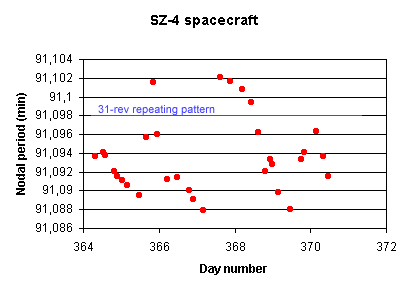
The graph below shows
the orbital periods of SZ-3 and SZ-4 as a function of mission elapsed time.
Clearly, SZ-4's period was kept in a narrower interval and manoeuvres were
smaller.
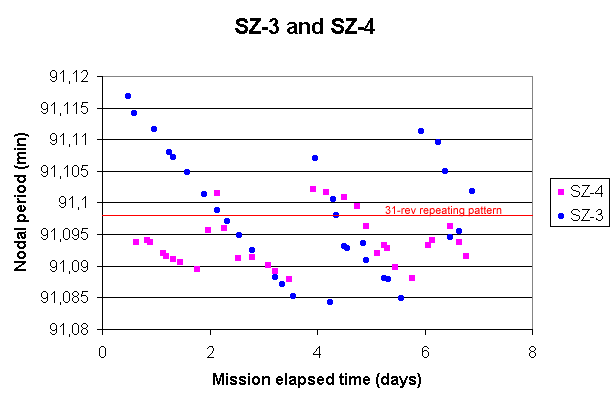
According to official Chinese sources the prime landing site is about 40 km from Hohhot (40.51°N, 111.38°E) the capital of the Inner Mongolia Autonomous Region. The target area is a narrow band 60 km long and 36 km wide. (Information via Harro Zimmer).
Xinhua, Chinas news agency wrote
"Earlier Sunday, China's ocean-based aerospace control ship "Yuanwang III" ordered the re-entry module's return while "ShenzhouIV" was orbiting Earth for the 107th time over the south Atlantic."So, the tracking ship was probably positioned near the spot indicated in the map below.
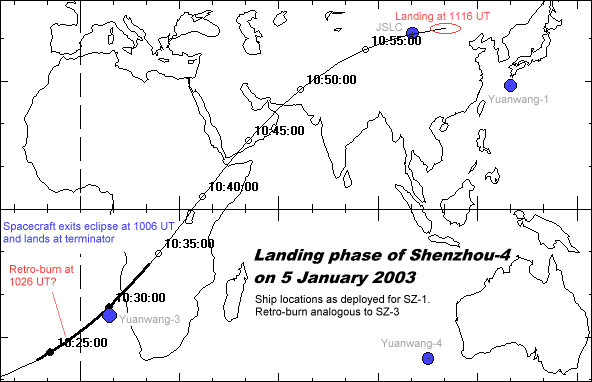
Xinhua also wrote:
" ... The spaceship was first spotted flying toward Earth by the Xi'an Satellite Monitoring Center, which was in charge of the re-entry module's recovery. The spaceship was later locked by radar by another survey station when it was about 30 kilometres from the landing site in Inner Mongolia, where temperatures reached minus 30 degrees centigrade. Like previous "Shenzhou" capsules, the spaceship parachuted down to the icy cold vast plain, with its parachute covering 1,200 square meters. The spaceship was quickly located by airborne and ground recovery teams in the snow-covered landing site. Helicopters hovered as recovery technicians drove toward the re-entry module... "
The recovery crew was
also depicted on Xinhua's web site:
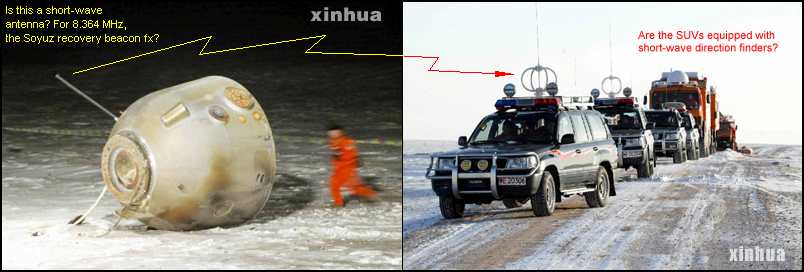
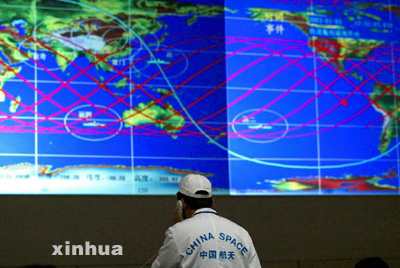
The map below is my interpretation of that image and a comparison with the location of the ships as deployed for SZ-1 and interpreted from similar map displays in the Beijing control center.
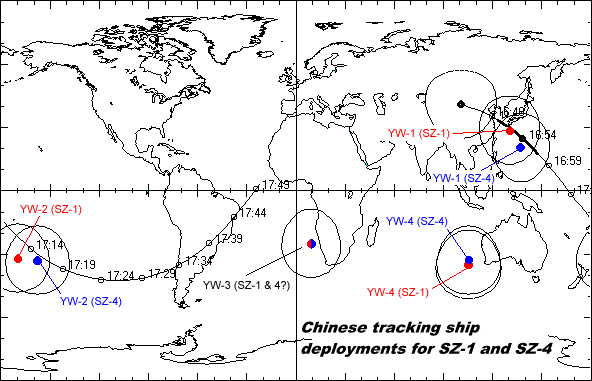
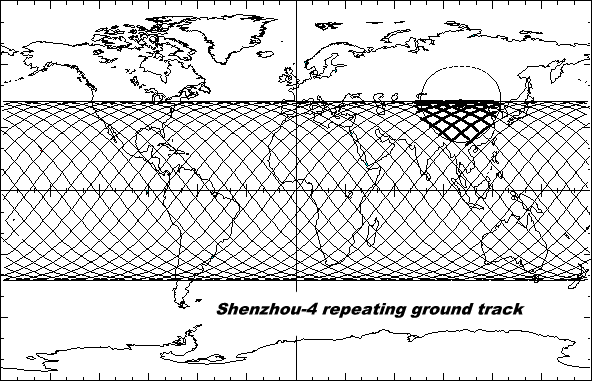
Phillip Clark has shrewdly observed that the ground track is nicely stabilized so that another object launched from JSLC can easily rendezvous with it. Is this a rehearsal for a future space station? Here are the numbers as I can make them out:
The zero-orbit north-bound equator crossing longitude (NBECL) for SZ-4 was about 2.5 deg W at 1619:03 UT on 29 December (20 m 57 s before lift-off). Presently the orbit ground track is stabilized so that the NBECL is 0.8 deg W. This means that, if the present SZ-4 orbit is designed to be an orbit for a rendezvous target, a chaser must be launched so that the chaser crosses the equator (2.5 - 0.8)*4 = 6.8 minutes later than the target. In this way the orbital planes of the two vehicles coincide. The difference in orbital periods between the target and the chaser orbit is approximately (91.1 - 89.6) = 1.5 minutes. This means that it will take 4-5 orbits to make up the 6.8 minutes phase difference. Thus, the orbit of the chaser needs to be raised after this interval.
The picture below shows the ground track of the repeating pattern orbit of SZ-4. It nicely slices right through JSLC!